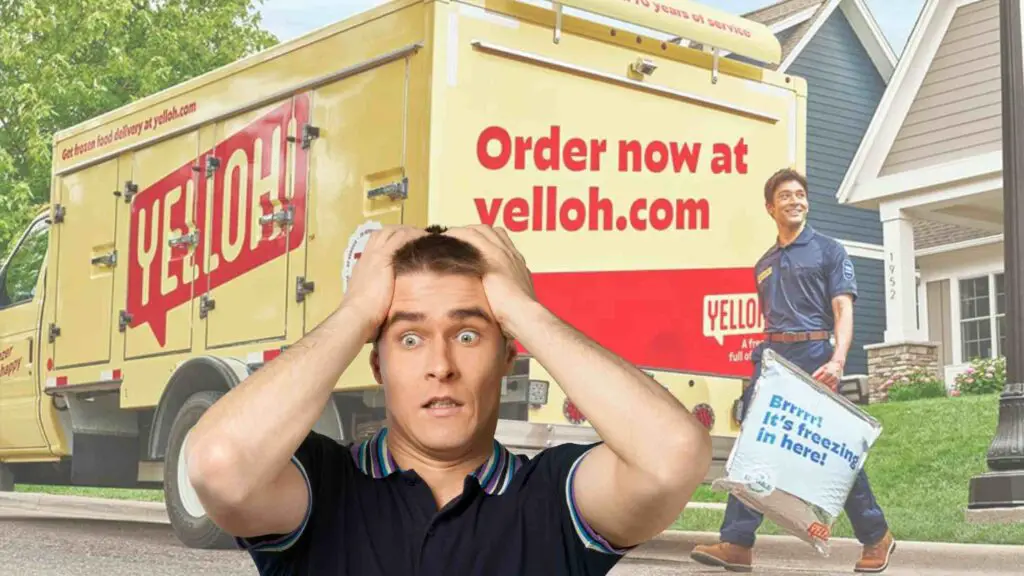Yelloh is a food delivery service started in the United States as a family-owned business. It was once known as Schwan’s Home Delivery. Yelloh has been a mainstay of the American food delivery industry for more than seven decades. It is famous for its yellow trucks that bring frozen foods directly to clients’ doors. Now, the business has been making news for less than good reasons. Several store closures and layoffs led to concerns about Yelloh’s future and capacity to compete in a rapidly changing market.
In response to increased competition and financial difficulties, Yelloh has started reducing operations. This article explains these issues and examines whether Yelloh is on the verge of quitting business.
DiscontinuedNews is impartial and independent, and every day, we create distinctive, world-class programs, news, and content that inform, educate and entertain millions of people worldwide.
Overview of the Yelloh Company
The story of Yelloh begins in 1952, when Marvin Schwan, aged 23, started delivering ice cream in rural Minnesota. Schwan’s Home Delivery became a beloved service over the next seven decades. It is known for its friendly drivers and iconic yellow trucks that bring frozen meals and treats to households across the United States.
Over the years, it expanded its offerings and became a beloved brand across the United States. In 2019, South Korean company CJ CheilJedang acquired a 70% stake in Schwan’s Company, which at the time was the parent company of Schwan’s Home Delivery. The home-delivery business was not part of the sale and members of the family retained the home-delivery segment.
Today, Schwan’s Company and Yelloh are entirely different businesses with separate management and ownership. In 2022, Schwan’s Home Delivery was rebranded as Yelloh, a move intended to modernize its image and appeal to a broader audience. It aims to flourish in an increasingly competitive food delivery landscape.
Yelloh Store closures and layoffs

Yelloh has faced significant operational changes in recent years. It was marked by two significant waves of store closures and layoffs:
- October 2023 Layoffs: Yelloh announced the closure of 90 delivery centers and the layoff of 750 employees nationwide. This decision reduced the company’s delivery footprint to 18 states. The company cited economic challenges and the need to adapt to a post-pandemic world as reasons for these closures.
- June 2024 Layoffs: In June 2024, Yelloh announced another round of store closures and layoffs. This time, 44 employees in Minnesota were laid off. The company closed delivery sites in Breckenridge, Esko, Eveleth, Moorhead, St. Cloud, and Waconia. Similar closures and layoffs were reported in other states, including Kentucky, New York, and Wisconsin.
Despite these closures, shipping remains available to the lower 48 states via UPS. However, the reduction in delivery areas and the shipping changes have raised concerns. It is about the company’s ability to maintain its traditional customer base.
The company has decided to stop operations in several regions by the end of July 2024. Despite these, Yelloh continues to operate in parts of Minnesota and 15 other states.
The shift from Schwan’s to Yellow
Yelloh’s rebranding was part of a more significant strategic attempt to modernize the company and set it apart from rivals. According to CEO Bernardo Santana, the new name aims to recall memories of the beloved yellow trucks. He said it is also maintaining a relationship with long-time customers. Yet, some customers are unhappy with the new products and service changes after the rebranding.
Mary Bartels is a long-time customer in Vermillion, South Dakota. She recalls the days when the yellow Schwan’s truck was a common sight outside her home. Her confidence in the company was so strong that she would leave a key for the delivery driver if she weren’t home. Schwan’s connection and reliability vanish as Yelloh navigates its new image.
Reasons behind the closures
In recent years, Yelloh has undergone major restructuring, which has led to the closure of many delivery centers. By June 2024, Yelloh continued to downsize, closing more delivery centers in multiple states, including six in Minnesota and facilities in Kentucky, New York, and Wisconsin.
These closures led to further job losses and a contraction of the company’s operational footprint. Thus, it is leaving Yelloh active in only 16 states by the end of July 2024. This downsizing reflects Yelloh’s efforts to streamline operations. It is trying to adapt to a competitive market environment.
Several factors contribute to Yelloh’s recent challenges. They are as follows:
Increased Competition: With the rise of services, the food delivery market has become highly competitive. These companies include Instacart, Uber Eats, and DoorDash. These companies offer more flexible and cheaper options for customers, making it difficult for Yelloh to maintain its market share.
Changing customer preferences: Modern customers prefer quick and flexible delivery options. But Yelloh’s model relies on scheduled deliveries by their iconic yellow trucks. On the other hand, competitors offer more immediate and convenient services.
Economic Challenges: Rising costs and financial issues have also pressured Yelloh. Like many businesses, Yelloh has had to cope with increased operational costs, which have impacted profitability and led to the closure of less viable depots.
Rebranding Issues: Schwan’s Home Delivery’s rebranding to Yelloh aimed to modernize the company’s image. Yet, this change has confused some loyal customers. They may feel disconnected from the new brand, impacting customer retention.
Impact on employees and communities
The closures and layoffs have significantly affected Yelloh’s employees and the communities they serve. In Minnesota alone, 44 employees are losing their jobs as the company shuts down operations in several cities. Similar cuts are happening across the country, including 51 layoffs in Kentucky and 46 in New York.
For many employees, Yelloh was more than just a job. Drivers like Nate O’Grady enjoyed building relationships with customers and their families. Now, he faces uncertainty as the company scales back. O’Grady reflects on his personal connections with customers, knowing their orders and preferences. This had set Yelloh apart from other delivery services.
Communities are also feeling the loss. In rural areas, grocery delivery options are limited. Thus, Yelloh’s departure leaves a gap that other services may not quickly fill. Local leaders and residents expressed concern for older adults who relied on Yelloh for grocery needs.
Mayor Randall Weddle of London, Kentucky, highlights the community’s dependence on Yelloh’s deliveries and the challenge of adapting to online ordering.
Company’s strategic shifts
The difficulties faced by Yelloh are similar to more significant trends in the food delivery sector. The industry has grown more competitive with new rivals. Danny Edsall is the co-leader of Deloitte’s global grocery practice. He observes that the food delivery business has expanded dramatically. He said several competitors were striving for a share of the grocery dollar.
Increased competition has made it difficult for Yelloh to maintain its market position. The company’s traditional approach to personalized delivery is being outpaced by rivals. They provide quick, app-based ordering and more choices in goods. Today’s customers want faster and more flexible delivery options, so many prefer grocery apps for scheduled delivery routes.
Yelloh plans to increase the number of clients who order through apps and the Internet. This will help them streamline logistics and cut costs. This strategy fits with broader industry trends in which businesses use digital platforms. Thus, it will boost customer satisfaction and streamline delivery processes.
The Future of Yelloh
Yelloh is still undergoing a restructuring and rebranding process. Yet worries persist about its long-term viability. The business’s focus on providing customer service via online and app-based solutions shows a transition toward a more modern delivery strategy. But losing the personal touch can turn off devoted customers who liked the yellow trucks’ human connection.
CEO Bernardo Santana acknowledges that creating a fresh brand and engaging clients in a competitive industry will take time. He stresses the need to respond to advances in technology and shifting customer preferences. Some customers, like Mary Bartels, will miss the in-person contacts with delivery drivers, but others may appreciate the ease of quick drop-offs.
Despite significant hurdles and reduced service regions, Yelloh is not going out of business. The business is undergoing a significant restructuring. The operations are being cut back to focus on profitability. Yelloh’s yellow trucks will continue to deliver in 16 states, and UPS shipping is available nationwide.
Conclusion
Yelloh will not go out of business. However, the industry is undoubtedly in a critical stage of restructuring and adaptation. The closures and layoffs are part of a larger plan to align the company with current market trends and client demands. Although the iconic yellow trucks are less visible on the road, yellow continues to play a role in the food delivery industry with a modernized approach.
The future of Yelloh is uncertain. Only time will tell if the company can successfully reinvent itself without losing the loyalty of its long-term clients.
